










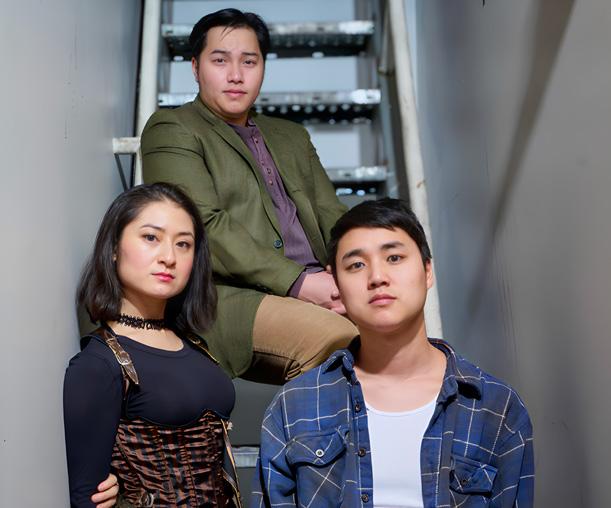



Senior Financial Planner, Financial Services Representative 2013 Quorum Business Leader of the Year 100 S 5th St, Suite 2300, Minneapolis MN 55402 rmoltaji@financialguide.com Call Roya today at 952-769-2126

Volume 30, Issue 774 • January 23-February 5, 2025
EDITORIAL
Managing Editor Noah Mitchell 612-461-8723
Editorial Assistant Linda Raines 612-436-4660
Editor Emeritus Ethan Boatner
Contributors Layla Amar, Lakey Bridge, E.B. Boatner, Buer Carlie, Natasha DeLion, Arthur Diggins, Alyssa Homeier, Terrance Griep, Elise Maren, Jen Peeples-Hampton, Linda Raines, Alexander Reed, Gregg Shapiro, Randy Stern, Susan Swavely, Carla Waldemar, Todd P. Walker, Emma Walytka, Spencer White
Vice President of Sales & Advertising
Barry Leavitt 612-436-4690
Account Executives
Nathan Johnson 612-436-4695
Richard Kranz 612-436-4675
Ad Listings Representative
Mackenzie Shaw 612-436-4672
Sales & Event Administration
Linda Raines 612-436-4660
National Sales Representatives Rivendell Media 212-242-6863
Creative/Digital Director Mike Hnida 612-436-4679
Publisher Lavender Media, Inc.
President & CEO Stephen Rocheford 612-436-4665
Chief Financial Officer Doug Starkebaum 612-436-4664
Administrative Assistant Michael Winikoff 612-436-4660
Distribution Metro Periodical Partners 612-281-3249
Founders George Holdgrafer, Stephen Rocheford
Inspiration Steven W. Anderson (1954-1994), Timothy J. Lee (1968-2002), Russell Berg (1957-2005), Kathryn Rocheford (1914-2006), Jonathan Halverson (1974-2010), Adam Houghtaling (1984-2012), Walker Pearce (1946-2013), Tim Campbell (1939-2015), John Townsend (1959-2019), George Holdgrafer (1951-2024)
are subject to editing for grammar, punctuation, space, and libel. They should be no more than 300 words. Letters must include name, address, and phone number. Unsigned letters will not be published. Priority will be given to letters that refer to material previously published in Lavender Magazine. Submit letters to Lavender Magazine, Letters to the Editor, 5100 Eden Ave, Suite 107, Edina, MN 55436 or e-mail editor@lavendermagazine.com.
For our Privacy Policy, go to LavenderMagazine.com/resources/ privacy-policy
LAVENDER MEDIA, INC.
5100 Eden Ave, Suite 107, Edina, MN 55436
612-436-4660 Office
612-436-4660 Subscriptions/Distribution
612-436-4660 Lavender Advertising
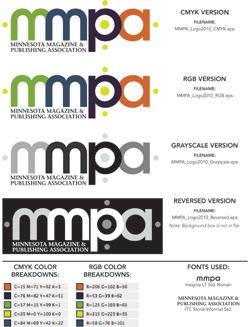


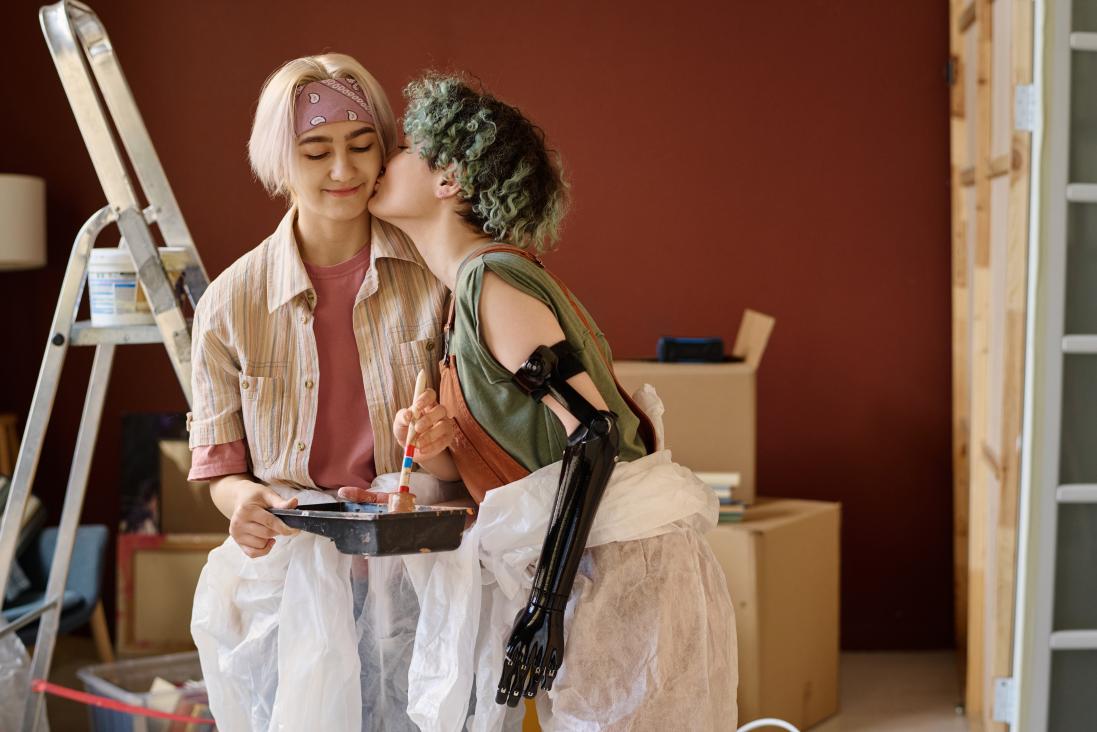




BY NOAH MITCHELL
I hope you all have some free time over the next few months, because this Spring Arts & Culture issue is absolutely jam-packed with things to do and see. From plays to see to books to read to films to watch to music to listen to, something within the next 36 pages is bound to catch your attention.
Being Minnesota’s LGBTQ+ magazine puts us at Lavender in a wonderful position to put together an Arts & Culture issue. Our state’s great arts scene is one of many great retorts to “why do you live there and put up with the cold?” and it’s on full display in this issue.
The Minnesota Philharmonic Orchestra is not only the country’s first LGBTQ+ orchestra — it’s in its 32nd season. There are more exciting local theater stories in this issue than I can keep track of. Uptown resident Mark Billy’s work with Idigenous languages in opera is fascinating and inspiring.
We also have stories from around the country and even across the pond. Makenzie Morgan Gomez, featured on the cover of this issue, is doing great work advocating for people with disabilities in the performing arts. English author Jon Savage’s book “The Secret Public” provides an in-depth history of LGBTQ+ contributions to pop music, and Lavender in turn has the story of his book. Short film “Auganic” has a twist evidently so explosive that we couldn’t include it — I’m as excited to find out as you are!
So, whether February brings brutal cold, nasty slush or (likely) both, I implore you to brave the elements and check out some of the amazing artists the Twin Cities have to offer. Or, if you’re not feeling up to it, curl up with a good book — after you’re done with your Lavender, of course!






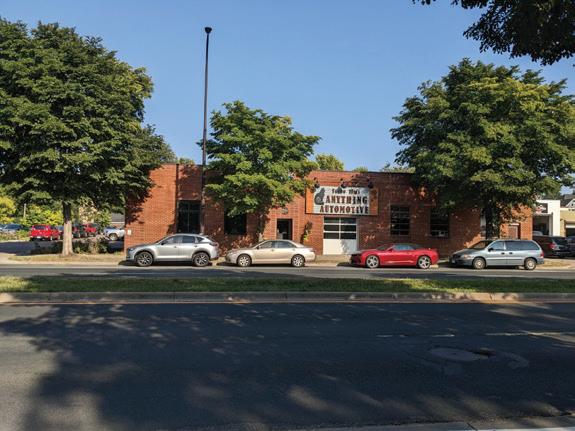







Lavender Media is seeking to add a Twin Citiesbased full time Account Executive to our sales team. We are looking for an outgoing, organized, self-driven & motivated professional with excellent phone, writing and presentation skills. Candidates should enjoy working directly with clients who are interested in growing their business through Lavender advertising and event sponsorships. Candidates must be local.
Compensation: $1,500 base + commission every issue (two weeks) and an employee benefits package that includes group health, dental, life insurance and LTD.
Applicants should have experience with Mac software environment, Excel, Word, social media platforms & database software such as Filemaker Pro. They should exhibit an elevated level of organization, attention to detail, the ability to work as part of a team, effective communication, self direction, enjoys working with new people and has a natural drive to grow. Please

BY E.B. BOATNER
I used to listen to “Fibber McGee and Molly” at night on my little radio back in the 1940s and ‘50s. The middle-class couple lived in Wistful Vista, where Fibber’s tales and Molly’s invariable “T’ain’t funny, McGee!” retorts were my first insights into repartee, while being glued to the 7 p.m.-everySunday Jack Benny show offered a masterclass in nuanced humor and timing. TV added visuals: gems like “The Honeymooners” (Jackie Gleason, Audrey Meadows, Art Carney, Joyce Randolph). Only 39 shows, but gems. They’re still on reruns if you hunt.
Pivoting from the horror, crime and mayhem of his EC Comics, Bill Gaines’s MAD magazine debuted in August 1952. Humor and satire reigned; gimlet-eyed exposé of the Grown-Up world by artists and writers who’d achieved calendar adulthood but declined to get on board. They unveiled before wide-eyed readers the methods adults (parents, educators, commercial jackals) were using to subdue youthful spirits and offering instead a sly “Cliff Notes” on how to spot an assault.
Older, I discovered Harvard Square’s International News stand stocked “Private Eye” with its taste of Brit wit that targeted everyone from Royals to plebes lifting the cloaks of the mighty, clerics’ robes and the pin-stripe armor of business-venal.

Christmas issues included flexible 45s with spoofs voiced by Barry Humphries, Peter Cook, Dudley Moore, Eleanor Bron and their ilk.
Humor is human. Imperial Russia had Nicolai Gogol (“The Inspector General”).The Soviets had Mikhail Bulgakov (“The Master and Margarita”) and Ilf and Petrov’s “The Twelve Chairs,” which struck Mel Brooks’ funny bone hard enough that he created his 1970 movie version. Not much humor from that vast land today, however. Olga Robinson, writing in 2018 for the BBC, opens, “How Putin’s Russia turned humor into a weapon.”
Laugher can literally heal. In 1964, Norman Cousins, then editor-in-chief of the Saturday Review of Literature, was stricken ill and given a 1-in500 chance of recovery. Cousins checked out of the hospital and into a hotel to submerge himself in humor. There, he made the “joyous discovery” that ten minutes of belly laughs brought him two hours of sleep. In 1979, Cousins published “Anatomy of an Illness,” outliving his original diagnosis by 26 years.

Unfortunately, laughter, satire, irony — the lot — are foreign to the humorless. Should they suspect they’re being mocked — or worse, their lack of raiment be pointed out — they’ll never, ever roll with the punches. “T’ain’t funny, McGee,” they’ll hiss, planning revenge.
Cartoonist Abner Dean knew them well. An example from his 1949 “And on the Eighth Day”: Stage right, a crowd of townsfolk laughing at a solitary “savior” who with sword and shield approaches a fire-breathing dragon emerging from its cave, stage left. Hilarity? The dragon is a skeleton, its skull rests on a forked branch, nostrils “breathing” smoke issuing from a smudge pot below, nothing’s hidden from the swordsman, but he doesn’t see the joke and sallies forth. Dean’s caption: “The humorless are the real leaders.”
One of America’s greatest crops is Humor, and when laughter is repressed, it’s as sure as ravaging locusts darkening the sky an omen of coming famine. Laughter, like the willow, bends in the gale; other taller, grander trees, if rigid, may snap under pressure. Keep smiling, give yourself up to mirth; you’ll keep afloat through rough waters.
Compare the smile quotient of our centenary leader for whom the American flag was recently flown at half-mast to that of those who will follow. The silencing of laughter, of humor, of a satiric song (Tom Lehrer) a book (“1984,” “Catcher in the Rye”), a film (“MASH”) or cartoon (Gary Trudeau, Pulitzer Prize winner Ann Telnaes) may be considered a sad — if not downright unhealthy — act.








BY CARLA WALDEMAR
They don’t call it the Zona Romántica for nothing. Puerto Vallarta reigns as the most gay-friendly and romance-forward destination in Mexico (Wait! Make that in all of the Americas). And the oceanfront Romantic Zone is its sizzling-hot center, where, stats say, one-fifth of all vacationers are of the LGBTQ+ persuasion.
You’ll find most of them sipping a margarita with their feet in the sand of Playa Los Muertos, the bull’s-eye of the scene. Factor in a bone-chilling Minnesota winter and the bonus of daily non-stops via Sun Country Airlines, and start packing your sunscreen.
Old Town stretches just beyond the beach umbrellas lining the alluring Malecón promenade, bursting with bars, cafes and shopping ops plus a non-stop view of the ocean. I confess that I prefer an Airbnb in a close-by residential neighborhood, such as cobblestoned but traffic-free Versalles, for a peek into a typical middle-class Mexican-cumresident-gringo way of life.
From a top-floor balcony (six thigh-challenging flights of stairs), each morning I sip my coffee while surveying neighbors walking their dogs or washing their cars while cafés fire up their grills for breakfast, and Uber users head out on their way to work or play. Relax at the building’s pool as blackbirds conduct their patrols or head to the ocean. It’s only a 15-minute ramble to the beach or a 20-minute bone-jangling bus jaunt to Old Town. But first, breakfast!
At Aguamiel’s courtyard patio, huevos rancheros hit the spot; it’s Noah’s for egg-topped enfrijoladas and freshsqueezed OJ; Cayaco, petite and contempo in design, for eggs scrambled with potatoes and a DIY array of salsas; or Fluffy, sporting a line down the block for its so-named pancakes.
Saturday is market day in Central, so we’re off to wander through the crafts offerings at the Three Hens and a Rooster, enclave, then nearby Olas Altas for more of the same. Here, farmers and artisans are backed by live music, which favors an impromptu dance line.
Close by, Tile Park beckons. Its cache of intricately tiled benches offers a chance to rest one’s feet — or scan a volume from the English bookshop just across the street (bathrooms for customers, too!).
Then aim for the nearby Malecón, where beach chairs and swimming-pool-size margaritas encourage a time-out for people-watching. One day, ambling this beguiling promenade, we spotted whales frisking in the distance, while nearby a troupe of Aztec dancers performed, then passed the hat — as did a quartet of top-of-the-flagpole acrobats.
At the north end of the Malecón, anchored by the landmark church of the Virgin of Guadalupe, topped by its iconic crown, it’s Ground Zero for my favorite contact sport: window shopping. Amble along the street a block in from the ocean to discover tiny alcoves of handicrafts surrounding the bigger (and excellent) one-stop-shop called Tlaquepaque. Further along, I make my annual pilgrimage to the store selling antique masks where, to further
endanger my bank account, I succumb to yet another wooden face to join its mates on the wall of my condo. At day’s end, we head to Restaurant Adobes, an intimate café whose kitchen knows a thing or two about enchiladas, chiles en nogada and Tex-Mex shrimp.
Sunday morning, temp of 80 degrees (that’s above zero) and not a cloud in sight (as usual, ho hum). We’re loaded up with towels and sunscreen and off for a day at the beach. The water is crisp and clear as gin — ideal for swimming for the brave and sand-strolling for the rest of us.
Which leaves me, as usual, ravenous. Back in the Versalles ’hood, it’s off to Ascensio, a small enclave with a modern flair, where imaginative tacos are the draw (mine featured raw tuna — yum!). Another night, the alley-type patio of Tuna Azul won us with Bunyan-size margaritas, flavorful guac, and my entrée choice of diced raw tuna mingling with mango, avocado and more. My dining partner’s order of shrimp in an airy tempura batter tasted even better.
For lunch that day we craved birria — that beloved pulled beef plus cup of consommé combo — and the best in town, they say, is to be found at ultra-informal Birriería El Tio Toño, where a chicken roamed the cement floor as we inhaled the magic potion.
We then waddled our way to the Old Town’s gallery district (DIY maps available) to peer into the city’s forward contemporary art scene, with prices geared toward Americans with fat checkbooks. Fun to ogle, though. Galería Colectika spotlights “ancestral contemporary” art, as does Galería Indígena, devoted to fancy beadwork.
More art is to be found on the table (eight of them) at La Fina, a sweet destination for a finale dinner. My choices: duck sope flavored with an addictively tart green sauce, followed by fried plantain stuffed with braised pork, more green sauce, white cheese, cream and beans. Or choose octopus chicharrón, lamb quesadilla, and more meaty plates. Reserve a table or weep.
Well, weep anyway, for it’s time to board a flight home tomorrow.
Over 30 gay bars in Old Town alone, including top picks like Bar Frida, Garbo, Paco’s Place, Antropology, Blue Chairs Resort by the Sea, Ritmus Beach Café (“green chairs”) and the lesbiancentric Apaches.
Gay Guide Vallarta is a free guidecum-map booklet available at many Old Town watering holes.
BY ARTHUR DIGGINS
Here it is: the first edition of a fabulous new food column! Once a month, it will provide profiles of the people and places that bring great eats and good times to the Twin Cities and surrounding areas, both LGBTQ+-owned establishments and places that welcome our community in general. A review portion of the column gives an opinion on the cuisine each venue offers, while the main text chronicles the feel of each place and the often-varied biographies of the cooks and owners who make it special. Enjoy!
Main Street, USA isn’t found in Disney World. It’s right here in Minnesota, in historic Stillwater (the first city incorporated in our state). Antique shops, taverns and restaurants line the shopping street, and tourists from all over the world enjoy the Midwestern small-town feel of the place (in recent years made more pedestrian-friendly by the controversial closing of the Stillwater Life Bridge to vehicular traffic).
Smack dab in the middle of things is the iconic Main Cafe, an eatery that sums up the Classic American dining experience. Murals by a local artist line the walls and cozy booths, ample tables and a counter-seating area create a throwback atmosphere that makes you exhale and know, “This is going to be great!”
However, not all is as simple as it seems. This little cafe boasts an international heritage and new ownership that is building a growing menu that fuses American favorites with international influences.
Casie Beltran is the new owner of Main, but when we visited, former owner Sammy Youssef was one day from retiring after thirty-five years as head chef and owner of the establishment. “I have been working,” he says simply.

Youssef recently sold the cafe to Beltran, a former Main employee who has become his hope for keeping the legacy of the diner an ongoing concern. He had considered selling the business for some time, and recalls, “Some people gave me an offer of a good price but wanted to turn it into a bar — I wanted to keep it as it is.”
Born in Egypt, Youssef went to high school and college in his native country. Then, his first college summer found him in Paris, France, working in various culinary capacities with three cousins who had emigrated there. Then, back to Egypt for school. Then back to Paris again — a migration pattern that continued for eight years until Youssef emigrated to Minnesota in 1984 and found himself on the fiftieth floor of the IDS center, working as a bar-back.
“But I had a goal in my head,” he says. “I wanted in five years to have my own business.”
A newspaper listing led him to the Main Cafe. Youssef recalls, “For one week, nobody knew what I was doing — I just came as a customer to watch the place and discover the town. I thought: ‘That’s good!’” And he was on board for his long tenure at Main.
As Beltran takes the reins, Youssef says, “I would like to see the place become more successful. If she succeeds, it’s good for me — makes me real happy. I will miss the customers. I have a really good connection with a lot of people.”
Beltran’s bio is much more local. Born in St. Paul, she moved to Lake Elmo at age five, then to Oakdale at age 15. She relocated to Stillwater two years ago.
Beltran has some education in interior design, but, like Youssef, found herself called to the culinary life at an early age when she started her food-service career in a family-owned sports bar. Work as a server led to stints as a banquet coordinator, caterer and coordinator for weddings and other events.
“I even did some baking, making wedding cakes,” Beltran recalls. “I was thrown into it — I did a little bit of everything, but I always liked cooking. My dream was to own a bed and breakfast and wedding venue,” she says, but she first found the opportunity to buy Main Cafe, also a former employer: “Sammy and I really hit it off, and it just went from there.”
“I want to keep that home-cooking, classic menu for the most part,” Beltran says, noting that the loyal clientele of Main will always want to nosh on their breakfast favorites: “The locals are what keeps it going. But I do want to try some new things, too,” such as initiating some in-bouse created desserts and more adventurous soups like a creamy Shrimp Corn Chowder.
“I want to kick it up a notch,” she says.
And she has. When I checked in with her a few weeks after my initial visit, she had hosted a weekend Cajun Breakfast special and had featured a Breakfast Burrito combining Mexican chorizo and salsa verde. A Chimi Churri Steak Breakfast brought together a six-ounce sirloin and roasted red peppers topped with Chimi Churri sauce, Swiss cheese and a fried egg topper. Beltran even did a Chorizo Eggs Benedict, which substituted the spicy sausage for the traditional Canadian bacon component of the dish.
“I want to keep the sense of community, and being comfortable when you come in here,” she says. “I want people to feel welcome, no matter who they are.”
She sums up the appeal of the venue: “It’s the iconic little cafe in downtown Stillwater. And I’m excited for what the future’s going to bring. You just gotta try it!”
Main Cafe is located at 108 Main St. S. in Stillwater, Minn. For hours and other information: themaincafe.wixsite.com/maincafe


We began brunch with coffee, of course: a robust medium roast served in a thick, warm mug. It opens your eyes and prepares you for the great food on hand.
The Gringo Breakfast features crispy, perfect hash browns with gooey cheese and just the right amount of fresh green peppers, onions and tomatoes. A cup of medium salsa ties it all together. The two scrambled eggs are perfectly cooked and just beg to be mixed with the other ingredients to make a crunchy, lip-smacking flavorful mess that satisfies. Side of toast. As with all the food we tried, a generous portion satisfies.
You don’t have to go to the Mediterranean for the perfect Gyro Omelet — it’s right here, a menu standby item that I, personally, cannot live without. The lamb meat is tender and the accompanying veggies are perfectly proportioned, cheesed in just the right amount and served with a cucumber sauce that’s creamy, cool and discreet enough not to overwhelm the main ingredients. A Greek-American fave sure to please. A traditional flatbread Gyro is also on the menu.
Falafel, another Mediterranean delight, is available, too: it’s crunchy, it’s spicy, it’s fresh tasting and just the right thing for a brunch outing.
Great Harvest bakery, a local gem, makes the main ingredient of Main’s Triple-Berry French Toast, which features berry-swirled bread topped with fresh berries and powdered sugar, and a side of maple syrup. It’s a buttery, sugary, thick-cut yum yum — tender on the inside with just the right crunch on the outside.
And the choices go on and on, an American bill of fare that tweaks things just a little and makes comfort food … comforting.
Are you convinced yet? The food is good at Main Cafe.
’Nuff said.






Walking Shadow Theatre has long been one of this writer’s favorite theater companies in the metro area. Walking Shadow showcases earnest, thoughtful and innovative pieces of work, often choosing pieces that have something to say (or ask) about the world we live in. Walking Shadow’s 2025 season promises yet another year of compelling storytelling. One of its founders and current Artistic Director, John Heimbuch, was kind enough to walk me through their upcoming shows: “Witch,” “Mae West and the Trial of Sex,” and “Zerolands.”
Mar 22 to Apr 13 at Open Eye Theatre
“Witch,” by Jen Silverman, will be co-directed by Cody R. Braudt and Amy Rummenie. In this Jacobean drama, a quaint village is upended when the devil comes to visit, offering to grant villagers’ wishes if they can pay his price: their souls. Protagonist Elizabeth seems like the ideal candidate for this bargain, considering she has been decried as a witch and cast out of the village, but the truth is not so simple and her soul is not so cheap.
“It’s a super fun script,” Heimbuch says. “An absolute romp! But the show’s humor has a real edge to it, a deep societal anger that I think will really resonate with people in 2025. It was written in the aftermath of the 2016 election, and it certainly doesn’t offer any easy answers to society’s systemic issues. What it does very effectively is to use dark humor to address the overwhelming frustration we all feel at the mundane awfulness
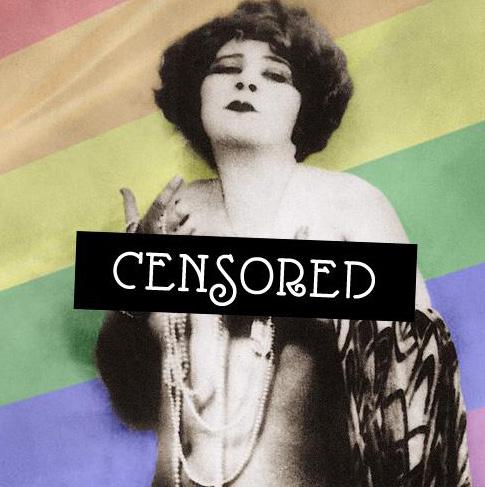
of the world, and allow the possibility that maybe, just maybe, another way is possible.”
Although not explicitly queer, there are elements of the play that will appeal to an LGTBQ+ audience.
“I think Silverman’s perspective on gender comes through in the play,” Heimbuch says, referring to Silverman being non-binary. “By having the devil offer people their heart’s desire in an over-the-top old-world setting, Silverman uses humor to explore the damaging impact of letting societal expectations shape people’s identities, whether that’s telling us who we’re allowed to love, who deserves success, what you’re allowed to want and who is allowed to take it.”
Mae West and the Trial of Sex
May 31 to June 22 at Crane Theater
“Mae West and the Trial of Sex” is written by Heimbuch himself and will be directed by Allison Vincent. This play is an exploration of actual historical events, centered around the ineffable Mae West and one of the more fraught chapters in her life.
“Mae West was a force of nature!” Heimbuch explains. “She rose through vaudeville as a dancer and blues singer, became a scandalous Broadway actress and playwright, and then went on to be one of Hollywood’s biggest stars in the 1930s.”
Heimbuch’s piece promises to be an interesting slice of the gay experience at an incredibly different point in time in American history.
“When I first read Mae West’s queer-themed 1927 play ‘The Drag,’ I was surprised by how directly it treated gay life almost a century ago,” Heimbuch says. “It had campy queens throwing shade, using queer slang, plus a large-scale drag ball, with an underlying message of empathy and understanding. How had I never heard of it before?”
Heimbuch was especially drawn to a specific chapter in West’s life: “I learned that ‘The Drag’ was the target of a nationwide censorship campaign that resulted in Mae West being arrested, tried, and jailed for her play ‘Sex,’ which was then in its tenth month on Broadway,” Heimbuch says. “As I dug into historical archives and old newspapers, attempting to piece together the full scope of these events, I found that the censorship laws that were put in place to prevent shows like ‘Sex’ and ‘The Drag’ from reaching Broadway had prohibited queer representation onstage for the next 40 years, and I knew this story needed to be told.”

TBD – Check Walking Shadow’s website for up-to-date information.
“Zerolands” is a new play by Liz Hara, John Heimbuch and David Pisa. This new work is part play and part escape room, which is a kind of storytelling that Walking Shadow has dabbled in before. This whimsical piece draws on science fiction elements and invites direct engagement from the audience.
As mentioned, this is not Walking Shadow’s first foray into interactive plays.
“We did two different plays with puzzles from 2019 to 2023!” Heimbuch says. “One was the in-person, immersive hands-on show ‘Cabal,’ in which the participants were initiates to a magical secret society facing a leadership crisis; and the other was the online zoom-based interactive ‘Reboot,’ in which the participants were a team of elite hackers who gain access to an abandoned government research facility.”
“Zerolands” is Walking Shadow’s most recent play of this type.
“In ‘Zerolands,’ the participants will be students taking a course on children’s literature featuring a journey into another dimension,” Heimbuch says. “The story unfolds through a combination of scenes with live performers, and the audience’s participation in various hands-on puzzles and interactive environments.”
Walking Shadow keeps coming back to this unique kind of storytelling for a reason.
“All live theatre is participatory on some level, because it fundamentally unfolds in real-time, at a shared location between the actors and the audience,” Heimbuch muses. “But at most shows, the audience’s role is rather passive … By shifting the audience’s engagement to include hands-on puzzles, immersive environments and some character interactions, it can increase their engagement with the experience. This allows us to engage different parts of the imagination than a traditional play does, and lets audiences feel invested in the story in a more personal way.”
Walking Shadow is a small theater company and welcomes participation from the community — even beyond the active audience participation of its escape room plays. If you enjoy their work as much as I do, there are opportunities for both skilled and unskilled volunteer positions that you can find out about by contacting them through their info email.
“We’re frequently looking for enthusiastic board members who are interested in supporting our theatrical work,” Heimbuch says.
Audition opportunities can be found on Minnesota Playlist and their website, walkingshadow.org.

BY NATASHA DELION
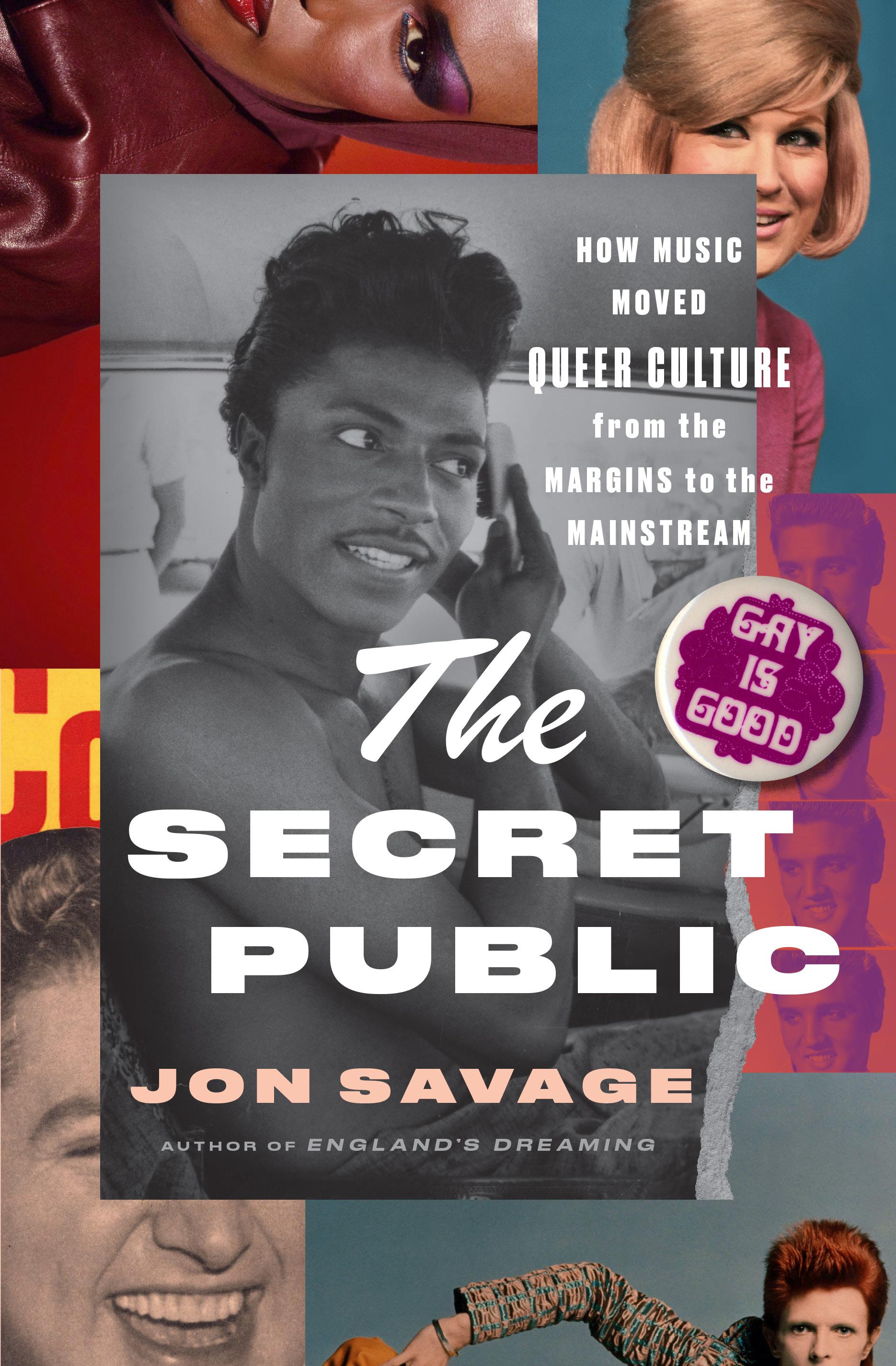

Music holds a certain power when invoking change. Whether it be artists like The Beatles and their pushback toward politics or David Bowie coming out and remaining wildly successful, many paved the way for queer culture to be in the mainstream as we see it today.
In his new book, Jon Savage explores pop music from 1955 through 1979 and the queer artists that were responsible for queer cultural breakthroughs. Beginning with Little Richard and ending with the collapse of disco, Savage takes us through how significant figures led to a massive social change bringing queer culture out of the shadows.
“The Secret Public: How Music Moved Queer Culture From the Margins to the Mainstream” is split into five parts, each containing seven chapters that explore major moments and people as well as legal and social occurrences at the time.
Each part kicks off with a specific month and year: November 1955, September 1961, June 1967, January 1973 and January 1978, according to Savage. He discusses icons like David Bowie, Johnnie Ray and Andy Warhol as well as significant influences such as “Saturday Night Fever,” the launch of Gay News and the progression of disco.
The book also explores some of the harsher realities of these times as well like Mary Whitehouse trying to shut down the Gay News in the U.K., the Homophile Movement advocating for LGBTQ+ equal rights and the discrimination queer people faced, according to Savage.
This is not the first time Savage has explored significant music eras and their impact. He wrote novels such as “England’s Dreaming” about punk rock and the Sex Pistols, “Teenage” where he explores the creation of youth culture, “1966” shaping the future of pop music and an oral history of the band Joy Division.
“All of these were projects that I wanted to do off the top of my head,” Savage says. “And then suddenly the way was clear to write this book.”
Savage says “The Secret Public” was influenced by his own experiences growing up gay in the U.K. in the 1960s, where the culture allowed youth, including himself, to find something to connect with.
“The experience of seeing something in popular culture that made you think, ‘Okay, I’m not getting any messages about who I am from my parents. I’m not getting any messages about who I am from my teachers or even from my peers. But here’s something that’s giving me a message about who I am.’ It’s really glamorous and really exciting,” Savage says.
For Savage, that moment of realization was seeing The Kinks perform “You Really Got Me” in 1964. He also says David Bowie coming out in 1972 saying “I’m gay and I always have been” was a major influence on him and was a major moment at the time.
“Bowie, who’d said that he was gay, basically bossed British pop culture for two years and that was an incredible thing to see,” Savage says.
That time was very liberating and music being less censored at the time allowed its images, ideas, sounds and feelings to reach people and pop culture in a way other media couldn’t, Savage says.
“I think pop music does have that power because music isn’t in the language of news, it’s not in the language of current affairs, it speaks to people’s feelings,” Savage says.
While exploring pop culture and queer culture in the book, Savage says he wanted to make sure the tone was right. The tone is written in a serious style that gives testament to what gay people went through and respects the pioneers of the time.
Reading through what gay people had to face in the ’50s and ’60s, including the horrible names thrown at them, was upsetting and angering, says Savage. Although, many parts were enjoyable to research like going deeper into the story of why Bowie decided to come out and looking into the early gay roots of disco, especially all of the brilliant records.
He says this book has always been at the back of his mind, so he’s collected materials such as books and magazines over 40 years.
“The book has, by the time I really realized I was gay, probably taken 55 years for me to actually write this,” Savage says. “Not because I’ve not been out, but just because other things got in the way.”
Savage says he hopes the book opens doors for more specifically targeted histories to be written such as the lesbian history of pop music. He also hopes that readers listen to some of the records mentioned throughout the book. From disco to rock, there’s no shortage of artists to discover and enjoy from this novel.
“The Secret Public: How Music Moved Queer Culture From the Margins to the Mainstream” by Jon Savage will be released on Feb. 4 in the U.S.








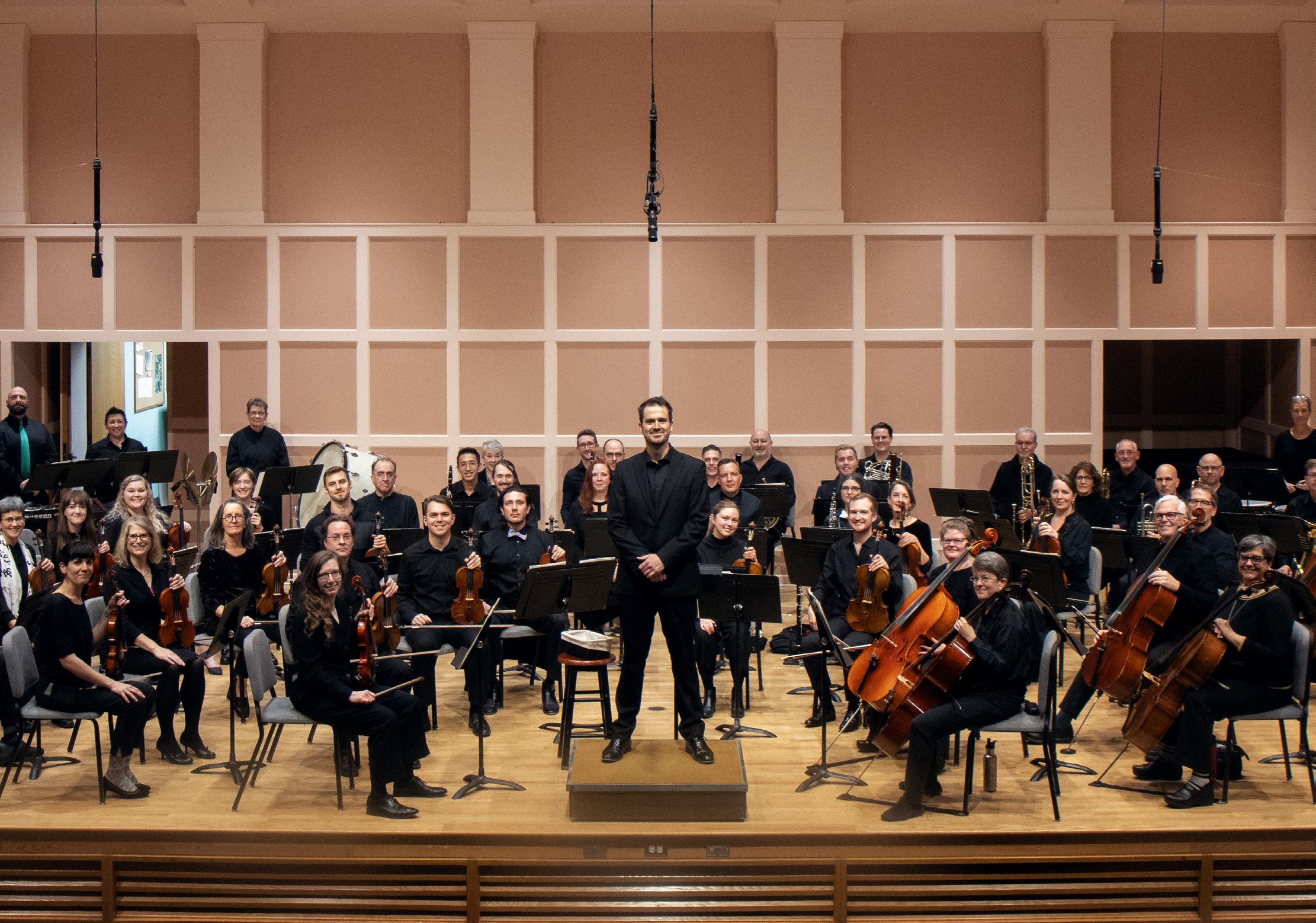
This year is the Minnesota Philharmonic Orchestra’s 32nd season, and they’re celebrating by bringing music that focuses on courage and creation to the stage. As the country’s first and Minnesota’s only LGBTQ+ orchestra, MPO has lived and breathed positive change into the community for more than 3 decades, and this year is no different. This season, they’re calling us to face the future with hope and bravery and imagine a more just, inclusive, creative and beautiful world.
The Minnesota Philharmonic Orchestra was founded in 1993 and has since crafted a high-quality place for the community to enjoy music per-
formances by typically underrepresented composers, especially LGBTQ+ artists, women and people of color. And one of their most shining achievements? MPO has made live music accessible to the whole community.
Catherine Himmerich, MPO’s concertmaster (which means she leads the violin section of the orchestra and serves as a musical liaison between the conductor and the rest of the musicians) says, “Classical music has a reputation for being elitist, but MPO has worked hard to be accessible to everyone. I love that we have people at our concerts who have never heard a live orchestra before, and nobody cares whether or not everyone in the audience follows the stuffy protocols of when to clap, when not to clap, and all that stuff.”
Himmerich even elaborates with an example, saying, “One of my favorite MPO memories is from after I soloed with the orchestra, and my friend let out a piercing whistle as soon as I finished, as though it were a sporting event.”
By creating such an encouraging environment for the whole community, the Minnesota Philharmonic Orchestra has become a haven for artists and art lovers alike to enjoy live performances. This is thanks, in large part, to the wonderful people who make up the board, staff and the orchestra itself at MPO.
Artistic director and conductor of MPO’s March show, “Rise,” Brian Dowdy, says, “Playing music, perhaps especially as an avocational musician, is a risky and vulnerable venture. Our musicians bring their full selves to every rehearsal and concert, not just in meeting the challenge that music-making offers to them as individuals but also in supporting each other. They are kind, courageous, tenacious and talented, and they really care about each other.”
Another massively important part of the Minnesota Philharmonic Orchestra is their history and mission as a queer orchestra. Having a specifically LGBTQ+ space with as much prestige and importance as MPO does is an integral part of the culture in the Twin Cities.
“LGBTQIA+ spaces are vitally important to our community,” Himmerich explains. “They always have been. Having somewhere to go where you are both supported and celebrated for being authentically yourself is essential to our well-being, and, I’d suggest, our survival.”
She continues, noting a harsh reality, “Not everyone can be out at work or to their families, and, especially when our human rights are put into question, having a space to create art with each other and then to share that creation with the wider community is both a joy and a vital part of sustaining our resilience.”
This focus on community and the production and performance of music by historically marginalized groups is a huge part of how the Minnesota Philharmonic Orchestra works to right the wrongs of history.
“[The annual commissioning] program funds new works by extraordinary composers who are also from historically marginalized communities,” Dowdy explains. “That’s how you truly transform the classical repertoire — by performing these new works alongside the music of underrepresented composers from decades and centuries past.”
On March 9, the Minnesota Philharmonic Orchestra will perform a breathtaking new show: “Rise.”
During this concert, Dowdy says, “We’ll be performing two pieces without intermission: Dmitri Shostakovich’s Symphony No. 5 and Nkeiru Okoye’s ‘Voices Shouting Out.’ Thematically, both are demonstrative of the human capacity for courage, though the orchestral colors they use to get there are very different.”
Dowdy explains the essence of each piece, saying, “Okoye’s piece gets going right away with percussive grooves and orchestral colors that will energize you even if it’s still cold and icy out there. Woodblocks, snare drums and trumpet fanfares, oh my! Shostakovich’s symphony is an extraordinary emotional journey. It doesn’t tell a specific story per se, but it feels like it does. There’s fear, expectation, trepidation, defiance and joy. But perhaps above all, there is the tremendous sound Shostakovich gets from the orchestra — rumbling basses, mysterious woodwinds, explosive percussion, heroic trumpets … It’s quite the sensory experience.”
Both of these pieces will leave you feeling empowered and hopeful for a better future, one that we can build together, with courage.
You can get tickets for “Rise” on the Minnesota Philharmonic Orchestra’s website, www.mnphil.org.

by WILLIAM SHAKESPEARE directed
JOSEPH HAJ

March 15 – May 18
Writer and director Krit Komkrichwarakool’s short film “Auganic” is a delicious slice-of-life story that doubles as a fairy tale for a modern, adult audience. The conceit at the center of the film is something of a spoiler, so I’ll keep that secret here, but ultimately “Auganic” is a gay love story that lightly examines several poignant questions. How is the love between two people different in public versus in private? What makes a relationship equitable? What, if anything, do we owe partners who support us? How does true love manifest?
Komkrichwarakool and actor Kenny Brain walked me through the purpose of the film, the process of bringing it to life and how it has been received so far.
“Auganic” is about a gay couple that discovers something magical within their relationship but disagrees about whether or not they can (or should) monetize that magic. It’s quirky, thoughtful and deviates from the tone you might be used to in queer storytelling.
“One of my main goals going into this film was to create a queer story
that highlights the brighter side of our experience,” Komkrichwarakool explains. “Too often, queer narratives are confined to narrow representations, either focusing on stereotypical humor or intense trauma … I aim to show that even the mundane aspects of everyday life can be captivating and meaningful. By framing these moments within the unique and surreal situation in Auganic, I hope to offer a fresh perspective on our stories.”
Upon reading the script Brain immediately recognized the power of this kind of storytelling.
“I really think anyone can watch this story and see characteristics of themselves in it,” Brain says. “Who hasn’t had financial troubles? Who hasn’t been faced with relationship turmoil? The story may have a fantastical element to it, but it’s really about two people, very much in love, going through life together.”
Komkrichwarakool continues: “It’s really about exploring what love and sacrifice mean within a relationship. There’s a unique power in honest communication, something many people in our community struggle with due to our upbringing and the challenges we’ve faced,” he says, then pauses. “It’s about finding common ground with your partner and learning how to navigate the compromises necessary for a healthy relationship. On a deeper level, it also reflects the dynamic between an artist and their work.”
Although “Auganic” is short, it is deliberate in unpacking the many layers of Kai and Nick’s relationship. We see them being sweet and silly, having arguments and in their most intimate moments in the bedroom.
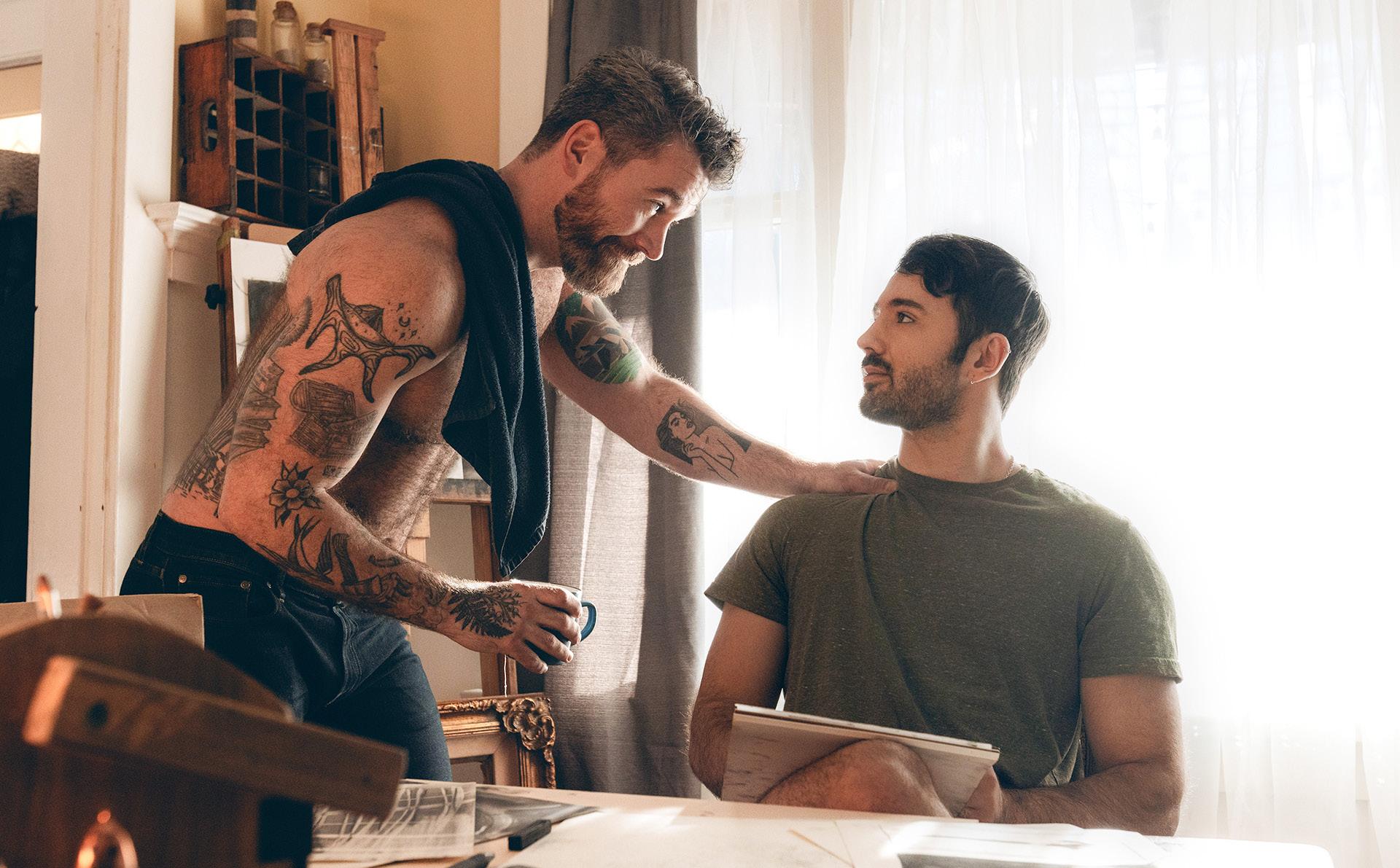
“The thing that drew me into it was the same thing that made me a little apprehensive,” Brain explains. “Telling a wider array of LGBTQ+ stories is so important, especially right now, and I really connected with my character Nick — but I would be lying if I didn’t have a moment where I thought: is this too much? … Neither [Matt or I] had done anything like this, including intimate scenes, so we kind of went on that journey together.”
Part of what made Brain comfortable with the script was his existing working relationship with Komkrichwarakool.
“I have worked with Krit on a previous short film called ‘Plantonic,’ which is exactly why I trusted him to do this film justice. I think it could have so easily strayed too far to the comedic side or very, you know … unserious?” Brain explains. “But I knew he had the chops to take an over-the-top storyline and bring it back down to earth.”
That trust flowed both ways.
“I had previously worked with Kenny Brain (Nick) on my last film, so I knew exactly how great he was and what he could bring to the table,” Komkrichwarakool explains. “Finding our other lead, Matt Dejanovic (Kai), took a few months … Once we saw the chemistry between him and Kenny during the test, I knew they were the right fit.”
Komkrichwarakool was really pleased with the performances he got from his actors.
“My approach is always to be very well-prepared in pre-production and then allow the actors to explore once we’re on set,” Komkrichwarakool says. “We did a few read-throughs and rehearsals to work out the finer details together, but once we were filming, it was very much their stage.”
The visuals of “Auganic” are sparse, sweeping and intentional.
“I had the privilege of working with my cinematographer, Joseph Schweers, who I’ve admired for nearly a decade,” Komkrichwarakool explains. “We approached the blocking in a way that made the space feel lived-in, allowing room for the characters to breathe as they moved through their daily lives. It was almost like a stage play, where we were the observers, quietly witnessing the unfolding story. I think this approach worked really well for the narrative, especially since it called for a sense of intimacy.”
Audiences have been incredibly receptive to “Auganic” so far.
“The reception has been amazing! I was super nervous for its release into the film festivals because, like I mentioned, this was the first time I’ve done anything like this,” Brian says. “However I feel like people got it, you know? They understood it. They connected with it.”
Komkrichwarakool agrees. “The first time I watched the film with an audience was at the Palm Springs International ShortFest, and it was nerve-wracking. The film has a very specific sense of humor, and I wasn’t sure how it would land with such a large audience,” he explains. “But the reception was incredibly positive! We also won ‘Best Live Action Short’ at the deadCenter Film Festival, which was an Academyqualifying award. That kick-started our award campaign for several months, which was a whirlwind. On top of that, we won a Best of the Province award at the Chilliwack Independent Film Festival in our hometown, which made it even more special.”
Unfortunately, “Auganic” isn’t available for all audiences quite yet. For the impatient, Kenny Brain let us know that he will be in the upcoming HGTV series “Life Is Messy” which airs in late summer or early fall of this year. For everyone else, rest assured that “Auganic” will publish streaming information to its Instagram as soon as that information is available, so follow their page and watch when you can. This writer is confident that Lavender readers will appreciate “Auganic” for its whimsy, representation and thoughtfulness.
@kennybrain
@auganicfilm


BY SHANE LUECK



“I describe myself as a Mexican-American, queer and dynamically disabled professional theater artist.”
So says Makenzie Morgan Gomez, who spent years falling into the trap of trying to fit into what she thought she needed to be or look like for the industry to take notice. Now in her thirties, she wants to be seen for all of the pieces of her identity that make her unique.
“I know I won’t be everyone’s cup of tea, but I’m hoping my authenticity will connect me with those that align with what I’m all about,” Gomez says. “The intersectionality of my identities informs how I navigate the world and therefore informs how I approach a character. Lately, my primary focus has been to highlight my disabled identity in my video projects to show viewers what’s possible when I say I’m dynamically disabled and rotate between multiple mobility aids. It can be hard for some people to imagine, so it’s important that I show it in my art.”
And that’s exactly what she’s done with her latest project, “Music and the Mirror (& Mobility Aids),” a reinterpretation of “The Music and the Mirror” from the Pulitzer-prize-winning musical “A Chorus Line.” Gomez learned the original Broadway choreography with the assistance of Cassidy Stoner before adapting each section to the mobility aid that worked best for her body.
“As my Off-Broadway debut play came to a close, I knew I wanted my next project to be dance-focused and that I wanted to incorporate all of my mobility aids,” Gomez says, explaining that most of the disabled dancers
on social media are wheelchair users. “The discussions from the start were about the best approach to ensure all my aids were used in the video.”
Viewers will notice she used a wheelchair, cane and crutches throughout the video, and her followers on social media might be fans of her service dog, Tilly, who excels at posing for a step and repeat.
Although her favorite part of creating the video was the sense of satisfaction when an adaptation matched the dynamics of the original choreography without losing its integrity, the main challenge she faced was fear.
“I was afraid my vision for this video concept piece wouldn’t be understood,” Gomez shares. “I was afraid I wouldn’t be able to learn the whole piece. I was afraid I would pour my heart and soul into the project only for it to go unnoticed. I’m glad to say none of my fears came true! But rehearsing and filming with that fear in the back of my mind was certainly a challenge to combat.”
What audiences don’t see is the work it took to get here. After dancing professionally for over a decade, the onset of autoimmune disorder symptoms and chronic musculoskeletal pain struck. She describes being undiagnosed and passed around from specialist to specialist as feeling incredibly isolating and scary.
“Prior to finding the disability community online, I had no idea people with symptoms like mine existed,” Gomez says. “Once I began discovering the disabled dancer niche, everything changed for me mentally. Seeing what others made possible with their disabled bodies encouraged me to get back to dance and learn what was possible on my own.”
Diagnosing and treating her autoimmune disease was the first step of many on her journey that led to creating this video.
“The most challenging symptom of my disabilities is that my leg will randomly go numb, affecting my ability to walk unassisted,” Gomez says. “When this first began happening, I feared it meant my career was over. Then, I realized my career was only over if I refused to learn to adapt. The only way I’d get back to dance and my life pursuing theater would be to embrace my mobility aids. This whole process has shown me how much I truly love my art! I’ve also learned to recognize and embrace my innate drive to educate and advocate for inclusion.”

She hopes that casting directors, creative teams and fellow performers will be inspired to explore disability-informed artistry moving forward. She says, “I’d love for the industry to become more accessible, and I hope to play a part in influencing that change. I want theater to reflect the diversity we see in our day-to-day lives.”
That’s why she is launching a new business called Creative Adaptations, LLC, which aims to empower professional theater makers to be disabilityinformed allies and adaptive creators and collaborators.
“I am so excited to roll out our first round of offerings in 2025!” Gomez says, directing anyone interested to creativeadaptations.co for more information. “Aside from that, back to auditioning I go. This will be my first audition season with an agent representing me, so I’m excited to see how it goes.”
BY ARTHUR
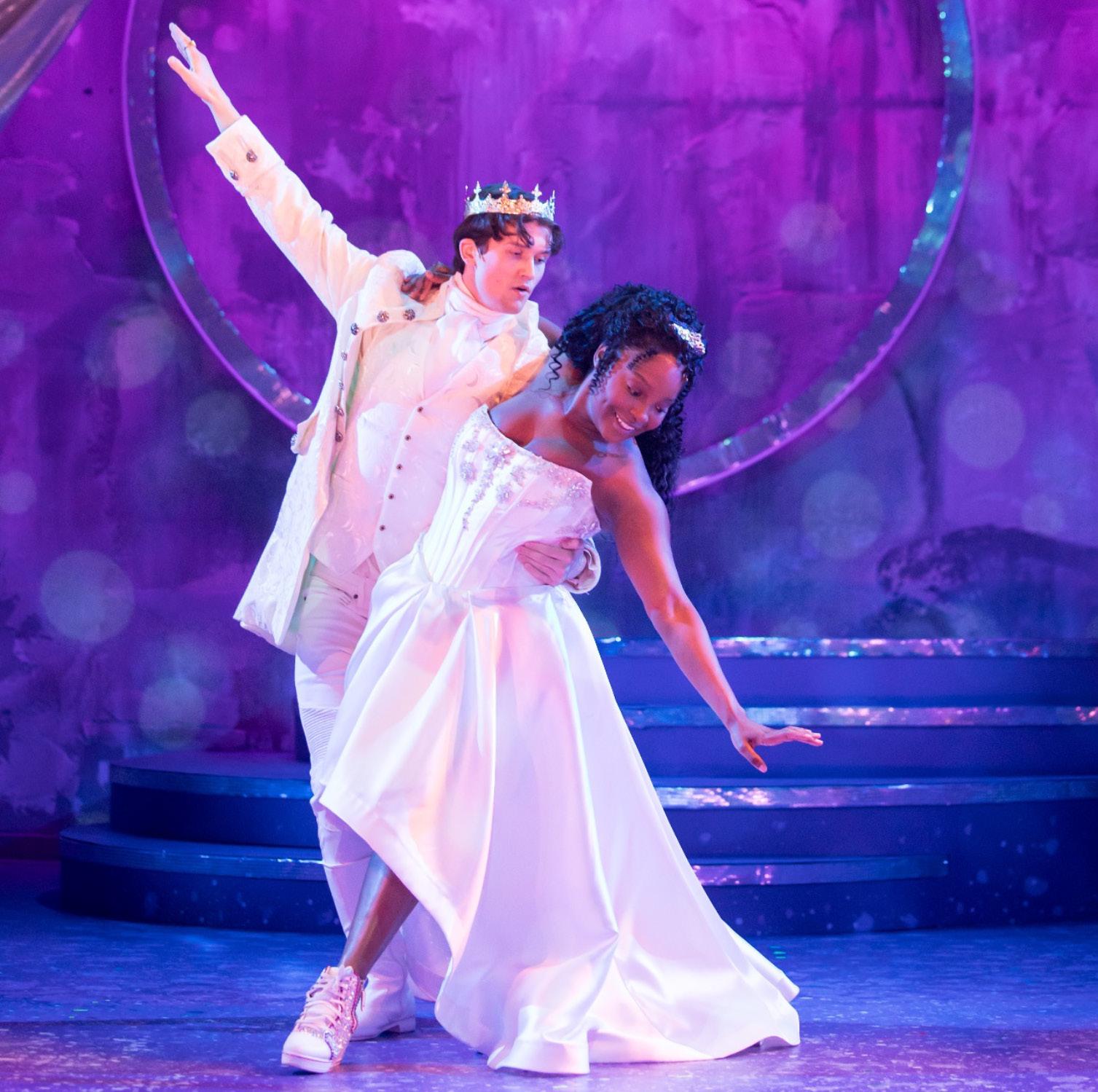
Many theatrical artists know from their first steps that they are called to the world of the theater. Their childhood ambitions and activities are oriented toward this awareness. They crave the limelight. They dream of growing up to act, direct and work in the theater realm.
None of this applies to Justin Lucero.
Yet Lucero has served for the last year as Artistic Director at Theater Latté Da, a powerhouse of musical and music-inclusive theater in the Twin Cities.
Lucero, instead, came across theater by accident. “I had not ever dabbled or even considered a career in theater until well after college,” he recalls. That college involved earning a degree in International Marketing and Business from Texas Christian University in Fort Worth. “I pleased my parents” with this achievement, he says.
But his initial work didn’t take him to marketing, but rather to education, as he took on the role of a kindergarten through eighth-grade teacher of German at a language magnet school in El Paso, Texas.
Again — no theater.
“But my best friend was a theater major at the University of Texas at El Paso,” he recalls. “I kept encouraging her in her field. Then I dared her to audition for a local dinner theater production [of Beauty and the Beast] that I found intriguing. She kept waffling and I said, ‘If you do, I will.’
“I went to the audition. She stood me up.”
“I auditioned and got cast in a principal role [of Cogsworth], and it shifted my entire being.”
Lucero then dabbled in community theater in El Paso and used theater as a tool to teach German in an immersion style.
Now, he had the bug, and, he says, “I shocked everybody and left my position as a department head and moved to London to get my training in Theater Directing in East 15 Acting School,” a conservatory of note located at The University of Essex in London.
Catch-up learning followed as Lucero came to the “very obvious conclusion” that directing is what he was meant to do. “I never looked back,” he says.
Lucero’s first academic position was as a professor of directing at The University of Houston, but before joining Theatre Latté Da, he had risen to a tenure track post also as a professor of directing at Carnegie Mellon University in Pittsburgh.
At that school, he served as head of an undergraduate BFA program, and during his four years with the faculty, he also taught

at the MFA graduate level. He was chair of the Diversity, Equity and Inclusion Committee at the school as well.
In short, he says he was, “very, very active as a professor.”
In tandem with his posts at UH and CMU, Lucero “freelanced” and served as Artistic Director at El Paso Opera for 7 of the 14 seasons with which he has been involved with that organization. This experience “cemented” his consideration that the “gravitational pull” of theater, for him, is music theater.
Secure in this prestigious academic and professional world, Lucero recalls that, “It’s kind of a forever gig — you don’t consider leaving.”
But everything at Theater Latté Da lined up so perfectly with his aptitudes and ambitions that, he says, he had “no choice but to say yes” when they made him an offer.
Latté Da exclusively programs and champions music theater, which, Lucero emphasizes, includes but is not limited to traditional musical theater productions. “We dabble in anything that has music as a central element,” he says, such as opera and more traditional plays which include music.
“No other place in the country actually does all three of those, which is exactly what I had dreamt for myself: a company that wasn’t exclusively musical theater, but left room for plays with music and opera,” Lucero says.
Lucero’s directorial style is a result of his experience as much as his creative powers. “I love bringing my musical theater sensibilities to opera, and bringing my opera sensibilities to musical theater,” he says.
For him, this means using music to “heighten” the overall theater experience, making it, to use his words, “hyper-theatrical.”
“The second you put music into anything on stage, it’s automatically heightened,” Lucero explains. “I love theatery-theater when an audience can’t forget that what they’re watching is theater. I love things with visual impact. I love work that is hyper-colorful.”
At the same time, subtlety and minimalism have their place in Lucero’s theater: “If the script calls for a living room, you can have a lamp and a couch, and you have a whole living room,” he says: “If a character dies, it

can be a change in lighting or costume, and everyone agrees the character has perished without flailing in a physical way.”
Lucero says performers at Latté Da enjoy “how we think about the work as a contribution to the greater art forms. We think about our place in the future development of musical theater; the overall contribution to the art form.” Lucero notes that casting and rehearsal processes, and the inclusion of instrumentalists, all serve to broaden how musical theater is considered.

“We really think from the ground up with every given project — what is being said not just by the piece, but by how we do the piece,” Lucero says.
Latté Da’s audiences are “very special, and they have high expectations,” Lucero says. “Not in terms of production quality, necessarily — they’re interested in challenging work, work that makes them excited about new approaches and new voices. If we ever did something that was cookie-cutter, they would tell us that they were disappointed. They’re not coming to be entertained: they’re coming to support art.”
During his first year at Latté Da, Lucero says his work has been “less about what I’ve changed and more about what I’ve continued. I loved being able to take the trajectory that we were on maybe focus it a little bit more.” Inclusion, Diversity, Equity and Access are important goals. He notes that he, as a Latino, sees very few people in peer positions who are also Latino.
Lucero promotes the overall theater community in the Twin Cities. He hosts a monthly breakfast gathering with small- and medium-sized companies’ Artistic Directors, and he sees himself in the role of unifying and improving communication and mutual support among members of the Twin Cities theater and artistic community.
“I love to support their work, and in the year that I’ve been here I’ve seen well over 100 shows in the Twin Cities,” Lucero says. “It’s been wonderful to experience the extremely deep and rich artistry and talent in the Twin Cities theater scene. I’ve been completely blown away by how much rigor and innovation and creativity there is here.”
Lucero says he has found the Twin Cities in general “really welcoming and friendly. I feel like there was not a bumpy transition whatsoever. I love how cosmopolitan it is and how much is offered. I love film and I love food, art and music — I find so much to do in the Twin Cities.”
Lucero’s advice to aspiring performers and directors? “There is not one obvious path to success,” he says. “When you want to be a full-time artist, everything in your experience will eventually fuel that art. If you’re walking in nature, if you’re having family time, if you’re generally curious, have the belief that that is someday going to come out in your art.”
Lucero concludes, “I want to make sure that people are proud of whatever their contribution is to Theater Latté Da. The people who work on our staff, the people who volunteer with us, the people who perform with us or the people that attend — I want them to find themselves in the work that we do, and as long as I’m doing that … I can be proud of myself!”
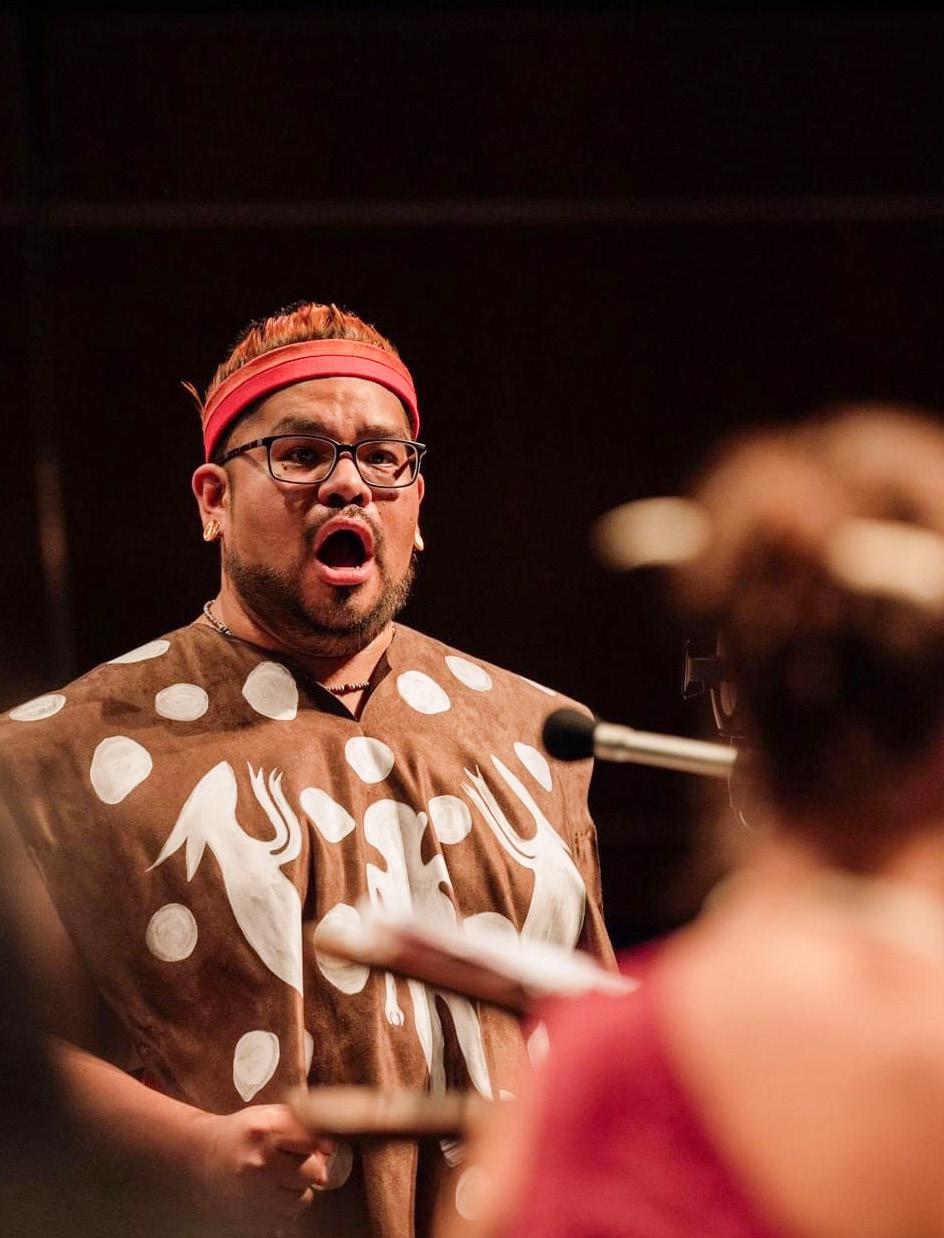
Within the Uptown Minneapolis venue’s lobby, which is, in fact, tonight’s venue, the sound bounces off the maize-yellow brick walls, spirals like dream-catching spider webs through the three glowing chandeliers, slides across the black bar with the elegance of a shelved elf, then swirls up the bar’s two ivory columns like invisible tinsel, eventually easing into the ear holes of the audience.
Continued on page 28


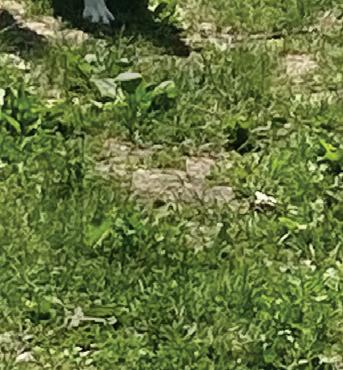




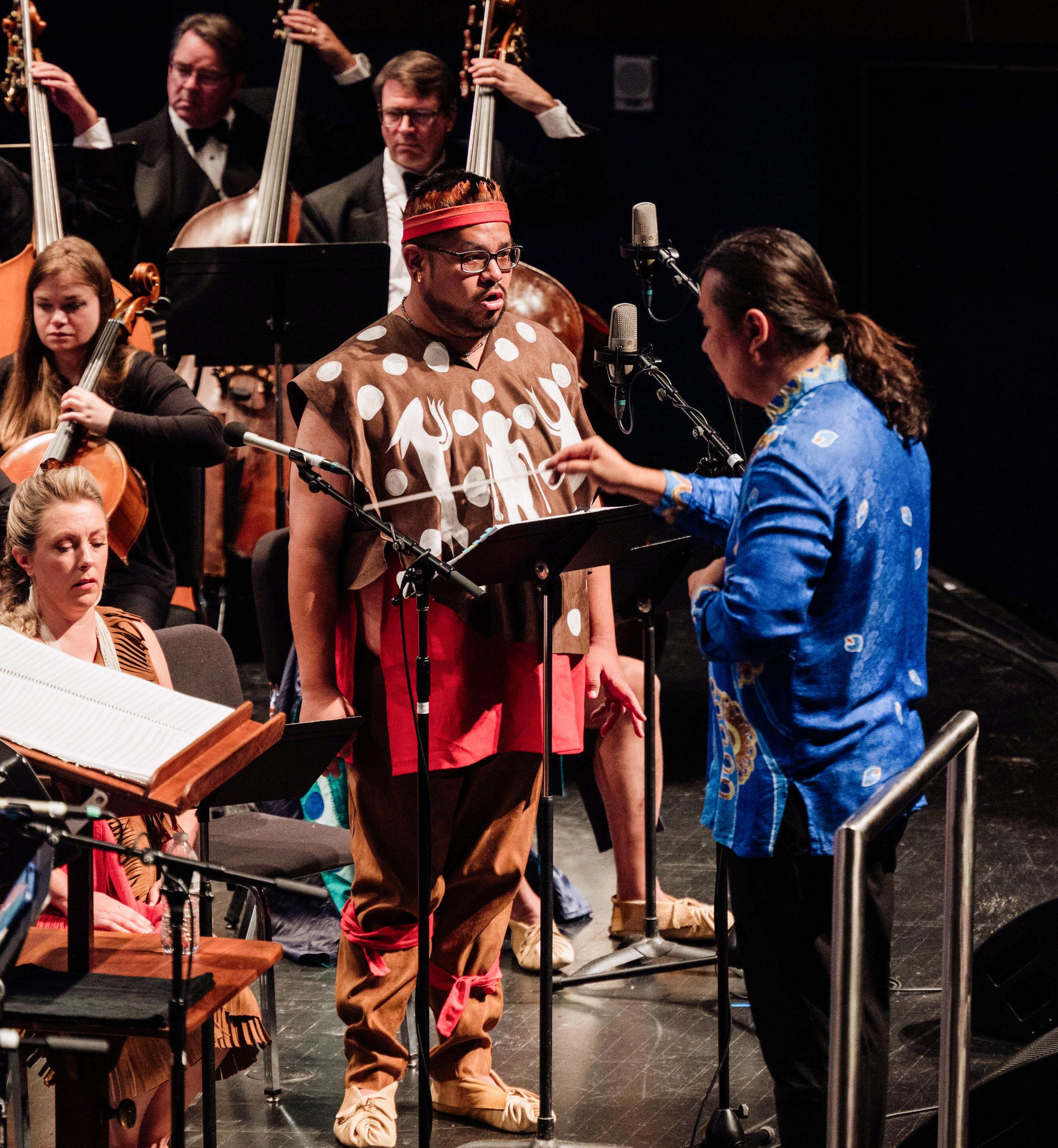
Which is also the sound’s source.
The audience is composed of nearly two dozen blue-haired civilians, non-singer singers whose ages range, with a few exceptions, from 60 to 120. It’s perhaps ten degrees too cold in the place, but no one seems to mind.
The Uptown Minneapolis venue is nearly a century old, but the melody that shapes the sound is twice that. The strain of the bouncing sound is no
great surprise, of course — it’s December 22, 2024, Christmas Eve Eve Eve, one might say, and the familiar siciliana is that of the iconic Yuletide hymn “Silent Night.” But the lyrics … well, the anything-but-silent lyrics speak for themselves, kind of:
“Ninak achukma ka, Ninak Holitopa, “Moyuma kvt, chúlosa, Fichik laua kut tohwikeli, “Nanta katihmi ho? Nanta katihmi ho?”
The choir/audience, reading and singing from dog-eared programs, definitely have a designated leader. He holds court on the lobby’s south side, resplendent in a turquoise tunic whose brightness is outshone only by the glowing, glittering seasonal lights he wears like a seizure-inducing necklace.
This is Mark Billy, who describes himself as “a queer, Indigenous opera singer.” The “opera singer” part of Billy’s unlikely identity comes through with each bar of the hymn, as every note is hit with the fidelity of a prizefighter … but there’s something more happening, too. The commingling of the untrained voices, sopranos, basses and the-just-plain-tone-deaf, has caused the audience members to bond just as much as their voices have … and that’s no accident.
“It was about bringing everyone together,” the designated leader confirms later, explaining the purpose of his final recital number being presented and shared in Choctaw, the lingo of Mark Billy’s tribe. “I didn’t realize the significance of language until I grew up. Now I love inviting people to participate, to join me. People singing together can bring them together and experience Choctaw in an intimate way.”
Billy’s larynx isn’t his only tool for fostering such intimacy with the individuals who form his audiences. He has mastered the clarinet and native flute, as well … but Billy’s primary method of bringing people together is the pairing and sharing of language.
“Besides just singing, I do a lot of workshops, more of a teaching role, teaching people how to speak Choctaw and how to sing it, as well,” Billy says. “People always go crazy for [the singing].”
Just one month before the Choctaw Christmas Concert, Billy presided over an interactive workshop that achieved this laudable end.
Recalls Billy, “I was the featured artist and artistic educator in a series of workshops at the Saint Paul Public Libraries focusing on singing in Choctaw — this culminated in a public concert where I performed works by Indigenous composers and collaborated with students from the work-

shop and the Ojibwe hip hop artist Thomas X.”
An “Ojibwe hip hop artist” … and you thought a “queer, Indigenous opera singer” sounded improbable.
In 2025, Billy has, naturally, continued to bond individuals together, employing the glue of lyrics. In February, he’ll travel to Boston to reprise his role in another mind-bending amalgamation.
Composed by Indigenous songsmith Jerod Impichchaachaaha’ Tate, the opera is entitled Loksi’ Shaali’, which in English translates to Shell Shaker. It reinterprets the old legend of how the Chickasaw people cosmically received turtle shells for ceremonies and stomp dancing.
“I created the lead baritone role of Inki’ in the historic first opera to ever be sung completely in an Indigenous language,” Mark Billy says. “The opera was sung in Chickasaw.”
Choctaw, Chickasaw, English — crikes, how many languages does this guy know? Catalogs the baritone, “In April 2025, I’ll join the Oklahoma City Philharmonic in the world premiere of Jerod Impichchaachaaha’ Tate’s American Indian Symphony in which I will sing in six different Indigenous languages.”
Nice work, if you can get it.
During the remainder of spring 2025, Mark Billy will be singing solo for the Bach Society of Minnesota, the Lubbock Symphony Orchestra and the Rochester Symphony. During these collaborations, he’ll lend his full tones to more Eurocentric pieces, bringing people together via music and language just as surely as he did in that Uptown Minneapolis venue during moonswept December.
Each of the baritone’s improbable pairings brings people together, but each also affirms a pairing that is the core of Mark Billy himself. As he puts it: “All of the projects I involve myself in, I try to honor my Choctaw heritage as well as my life as a member of the LGBTQIA+ community.”
www.markbillybaritone.com





“‘Sanctuary’ has become a concept that applies to so many folks these days,” muses Wendy Knox, director of Frank Theatre’s upcoming production of “Sanctuary City.” Written by Pulitzer Prize-winning playwright Martyna Majok, this play grapples with themes that are specific and timely in addition to being universal and evergreen. Knox was kind enough to chat me through what drew Frank Theatre to this play along with details of the upcoming performance.
Just last year, Frank Theatre mounted a production of Majok’s breakthrough work “Ironbound.”
“Through that experience, we found that she’s a very astute playwright, very smart, and her words opened up all kinds of things for us to explore,” Knox says. “So, when we got our hands on a copy of ‘Sanctuary City’ and read that, it felt like a no-brainer. We’re always interested in doing work that reflects the world we live in, and immigration is certainly a topic that is hot right now — and about to get hotter — so it seemed like we had to do the show.”
Frank Theatre puts a high value on mounting works that are thoughtful and relevant to audience members’ lived experiences.
“Almostall of Frank’s work is in conversation with the world we live in. And this piece, I feel, speaks to any and all of us who are perceived, or feel themselves, to be outsiders,” Knox says. “Wanting a base, a home, a place from where you can be yourself and build your life is a universal desire.”
“Sanctuary City” follows the lives of two adolescents over the course of four years, right after 9/11. Knox explains that both characters were “brought to the US as children, who have grown up knowing this place as their only home … It’s coming of age, in that it encompasses about 4 years of their lives, from 17 to 21, as they are going through huge transitions.”
The play is uniquely structured in a way that emphasizes the many themes it explores.
“It’s a memory play for the first two-thirds … and the final third settles into a present where the issues all come to a head,” Knox explains. “Majok manages to bring together — as she did in ‘Ironbound’ — issues of race, class and sexuality in a very potent combination as she asks questions about our world.”
Race is a central part of “Sanctuary City,” but Majok wanted to give theaters the chance to tell this specific story in a way that resonates with their own communities.
“Majok gives a specific direction that that casting could involve any racial/ethnic group except white, Western European groups,” Knox explains. “She’s also crafted the play so that it doesn’t exclusively appear to be about a specific group.”
During casting this left Knox in an interesting place. “In casting the show, I was open to any actors,” she says. “Perhaps the most obvious group, given the contemporary conversation about immigration, may have been actors who are from or descended from, south of the border groups, however, I was curious about a Somali cast or an Asian cast.”
Although the play takes place in New Jersey, both of these choices would give this iteration of “Sanctuary City” an essence of Minnesota given that Minnesota has been a hub for Somali and Hmong immigration. After actors Clay Man Soo and Anna Hashizume participated in a reading last summer, Knox says she made her mind up. “They were fabulous,” she says.
Clay Man Soo is a part of the “Sanctuary City” cast in addition to Stephanie Anne Bertumen and Keivin Vang. All three are new to Frank Theatre. “We’re having a great time digesting the script in rehearsal,” Knox says.
Knox is also pleased to have many members of the creative team returning to Frank Theatre for “Sanctuary City” this year.
“The design/production team is made up of ‘repeat offenders’ at Frank, and I couldn’t be in better hands,” Knox says with a laugh. “Joe Stanley (set), Kathy Kohl (costumes), Tony Stoeri (lighting) and Dan Dukich (sound). Everyone is excited, challenged and eager to figure this thing out.”
The play will be at the intimate Open Eye Theatre in Minneapolis.
“We love Open Eye and are excited to be there for the first time since we staged our devised version of Kafka’s ‘Metamorphosis’ years ago,” Knox says. “The intimacy of the space is great … The playwright has noted that there are no props in the first section of the play, so there’s a challenge to make sure that everyone can see what is going on with the characters — the proscenium setup of Open Eye lends itself to that goal.”
“Sanctuary City” will run from January 31 through February 23 at Open Eye Theater. Tickets are $30 with a $5 discount for students and seniors and can be purchased on the website, which is listed below. There is also a pay-what-youcan performance on Saturday, February 1 and masks are required on Friday, February 7 and Sunday, February 16.
Open Eye Theatre
www.openeyetheatre.org/sanctuary-city
Community Connection brings visibility to local LGBTQ-friendly non-profit organizations. To reserve your listing in Community Connection, email advertising@lavendermagazine. com.
ANIMAL RESCUE
Second Chance Animal Rescue
Dedicated to rescuing, fostering, caring for, and adopting out dogs and cats into forever homes.
P.O. Box 10533 White Bear Lake, MN 55110 (651) 771-5662 www.secondchancerescue.org
BUSINESS ASSOCIATIONS
Quorum
Minnesota's LGBTQ+ and Allied Chamber of Commerce working to build, connect, and strengthen for a diverse business community. 2446 University Ave. W., Ste 112 St. Paul, MN 55114 (612) 460-8153 www.twincitiesquorum.com
The Nature Conservancy
TNC is an environmental nonprofit working to create a world where people and nature thrive. 1101 W. River Pkwy., Ste. 200 Minneapolis, MN 55415-1291 (612) 331-0700 minnesota@tnc.org www.nature.org/minnesota
EVENT VENUES
Landmark Center
A classic venue, with a grand cortile and beautiful courtrooms, accommodates celebrations of all sizes. 75 W. 5th St. St. Paul, MN 55102 (651) 292-3228 www.landmarkcenter.org
GRANTMAKERS/FUNDERS
PFund Foundation
PFund is the LGBTQ+ community foundation that provides grants to students and grants to non-profits. PO Box 3640 Minneapolis, MN 55403 (612) 870-1806 www.pfundfoundation.org
HEALTH & WELLNESS
Aliveness Project
Community Center for individuals living with HIV/AIDS – on-site meals, food shelf, and supportive service. 3808 Nicollet Ave. S. Minneapolis, MN 55102 (612) 824-LIFE (5433) www.aliveness.org
Family Tree Clinic
We're a sliding fee sexual health clinic and education center, now in Minneapolis. 1919 Nicollet Ave. Minneapolis MN 55403 (612) 473-0800 www.familytreeclinic.org
Keane Sense of Rhythm
Celebrate your true self with Tap dance!
1st week free, Join us now!
2161 University Avenue W., Ste. 117 St. Paul, MN. 55114 (612) 251-4744 info@tapcompany.org www.tapcompany.org
NAMI Minnesota
(National Alliance on Mental Illness)
Providing free classes and peer support groups for people affected by mental illnesses.
1919 University Ave. W., Ste. 400 St. Paul, MN 55104 (651) 645-2948 www.namimn.org
Red Door Clinic
HIV and STI screening, treatment, education, and referrals. Doxy PEP, nPEP, PrEP, and Reproductive Health. 525 Portland Ave., 4th Fl. Minneapolis, MN 55415 (612) 543-5555 reddoor@hennepin.us www.reddoorclinic.org
Quatrefoil Library
Your LGBTQ+ library and community center. Free membership, events, and e-books/audiobooks. Check us out!
1220 E. Lake St. Minneapolis, MN 55407 (612) 729-2543 www.qlibrary.org
MEDIA & COMMUNICATIONS
Radio K
Radio K is the award-winning studentrun radio station of the University of Minnesota.
330 21st. Ave. S. Minneapolis, MN 55455 (612) 625-3500 www.radiok.org
Minnesota Historical Society
Create your own adventure at MNHS historic sites and museums around Minnesota. mnhs.org
Minneapolis Institute of Art
Enjoy masterpieces from all over the world & every period of human history. Free admission daily!
2400 3rd Ave. S. Minneapolis, MN 55404 (612) 870-3000 www.artsmia.org
Chanhassen Dinner Theatres
The nation's largest professional dinner theater and Minnesota's own entertainment destination.
501 W. 78th St. Chanhassen, MN 55317 (952) 934-1525 www.ChanhassenDT.com
Children’s Theatre Company
Children’s Theatre Company excites the imagination with world-class family-friendly theatre for kids, teens, and adults.
2400 3rd Ave. S. Minneapolis, MN 55404 (612) 874-0400 www.childrenstheatre.org
Guthrie Theater
Open to the public year-round, the Guthrie produces classic and contemporary plays on three stages. 818 S. 2nd St. Minneapolis, MN 55415 (612) 377-2224 www.guthrietheater.org
Minnesota Opera
World-class opera draws you into a synthesis of beauty; breathtaking music, stunning costumes & extraordinary sets. Performances at the Ordway Music Theater - 345 Washington St. St. Paul, MN 55102 (612) 333-6669 www.mnopera.org
Minnesota Orchestra
Led by Music Director Designate Thomas Søndergård, the Minnesota Orchestra, one of America’s leading symphony orchestras. 1111 Nicollet Mall Minneapolis, MN 55403 (612) 371-5656, (800) 292-4141 www.minnesotaorchestra.org
Ordway Center for the Performing Arts
Leading performing arts center with two stages presenting Broadway musicals, concerts & educational programs that enrich diverse audiences.
345 Washington St. St. Paul, MN 55102 (651) 224-4222 info@ordway.org www.ordway.org
Twin Cities Gay Men’s Chorus
An award-winning chorus building community through music and offers entertainment worth coming out for! 1430 W. 28th St., Ste. B Minneapolis, MN 55408 (612) 339-SONG (7664) chorus@tcgmc.org www.tcgmc.org
All God’s Children Metropolitan Community Church
A welcoming, inclusive, safe place to explore and discover God’s love for ALL God’s children. 3100 Park Ave. Minneapolis, MN 55407 (612) 824-2673 www.agcmcc.org
Hennepin Avenue United Methodist Church
Everyone is welcome at Hennepin Church! Vibrant Worship. Authentic Community. Bold Outreach. 511 Groveland Ave. Minneapolis, MN 55403 (612) 871-5303 www.hennepinchurch.org
Plymouth Congregational Church
Many Hearts, One Song; Many Hands, One Church. Find us on Facebook and Twitter. 1900 Nicollet Ave. Minneapolis, MN 55403 (612) 871-7400 www.plymouth.org
St. Philip's Lutheran Church
We invite and welcome those of every spiritual background, ethnicity, gender orientation, or economic situation. 6180 Hwy 65 Fridley, MN 55432 (763) 571-1500 www.splcmn.org
University Baptist Church
Creating safe and inclusive spaces for 175 years, UBC stands proudly with our LGBTQ+ family. 1219 University Ave. SE Minneapolis, MN 55414 (612) 331-1768 www.ubcmn.org
Westminster Presbyterian Church
An open and affirming congregation, welcoming persons of all sexual orientations, gender expressions and identities. 1200 Marquette Ave. Minneapolis, MN 55403 (612) 332-3421 www.westminstermpls.org
Lyngblomsten Community Services
Empowering older adults to live well at home through caregiver support, memory-loss enrichment, & wellness education. 1415 Almond Ave. St. Paul, MN 55108 (651) 632-5330 www.Lyngblomsten.org/CServices
Senior Community Services
Providing non-medical services that meet the changing needs of older adults & support their caregivers. 10201 Wayzata Blvd., Ste. 335 Minnetonka, MN 55305 (952) 541-1019 www.seniorcommunity.org/lav
SOCIAL
Lutheran Social Service of Minnesota
Serving all Minnesotans with personcentered services that promote full and abundant lives.
lssmn.org | (651) 642-5990 | (800) 582-5260 Employment Opportunities | lssmn.org/careers PICS (Partners in Community Supports) | picsmn.org
Pooled Trust | (888) 806-6844
Supported Decision-Making | (888) 806-6844
Westopolis
Minnesota’s Sweet Spot! St. Louis Park & Golden Valley offer exceptional dining, attractions, shopping, hotels and event space.
1660 Hwy 100 S., Ste. 501 St. Louis Park, MN 55416 (952) 426-4047
www.westopolis.org
Estimates 7am-4:30pm



















In 1976, I invited Vietnam Veteran Leonard Matlovich to join me in Florida to campaign for Pennsylvania’s governor, Milton Shapp, who was running in the Florida State Democratic primary for president. We were part of a group called “Gays for Shapp.” Shapp didn’t go very far in his quest for the White House, but his opponent — a peanut farmer from Plains, Ga. — did. His name was Jimmy Carter.
During the campaign, there was a debate between the candidates, and at that debate, I had the opportunity to speak with Carter. There was only one question: Where did he stand on nondiscrimination against the gay community? He thought for a while, and it seemed to me that this was a question he hadn’t been asked before. After a pause, he simply replied, “I’m against any kind of discrimination.” That was the first time any presidential candidate spoke up on LGBTQ+ issues.
Later in the campaign, he backed that statement up in writing and never shied away from the subject. In doing so, he became the first presidential candidate to engage with the LGBTQ+ community. When he became president, his administration was the first to open the White House doors to the LGBTQ+ community. He appointed Midge Costanza as head of his Office of Public Liaison. Under the approval of President Carter, she arranged the first high-level White House meeting with LGBTQ+ leaders.
These were pioneering baby steps, and they were welcomed by a president who considered himself an evangelical Christian.
After leaving the White House, he spoke out against the Briggs Initiative in California, which would bar LGBTQ+ teachers, opposed the Boy Scouts’ ban on gay scoutmasters, and even supported marriage equality.
His historic steps as president are chronicled in “The Carter Presidency and Gay Rights” by Harris Dousemetzis. But President Carter best described his actions in an interview in The Advocate in 2005.
Reporter Sean Kennedy asked, “You’re a Christian, but you don’t have a problem with gay men and lesbians as many other Christians do. Why?” Carter responded, “I’m a worshipper of Jesus Christ, who never mentioned homosexuals in any way — certainly not in a deleterious fashion. And when it has been mentioned in the New Testament, it’s been combined with things like selfishness or something like that. So I’ve never looked upon it as any sort of reason to condemn a person. I think it’s an inherent characteristic just like other things that we do with our lives.”
Jimmy, rest in peace, and thank you!



